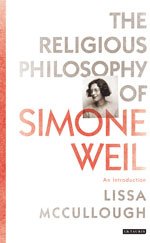About Time We Take Simone Weil Seriously
Simone Weil (1909-1943) philosophical and religious concepts are radical, exceptionally original, often unconventional, and explicitly anti-orthodox at various junctures.
Commentators grapple with Weil’s radical ideas, either failing to acknowledge their full extent or overly defending her against extreme claims.
A diligent critic should meticulously explore the complexity of Weil’s ideas, interpreting them cohesively based on explicit words.
The subsequent decision of whether to embrace or reject her thoughts constitutes a distinct and separate phase of legitimate criticism. Initially, the critic’s role is not to filter, qualify, moderate, or correct her meaning but to accurately grasp it to the best of their ability.
Only after achieving this understanding does the act of judgment come into play.
A Significant yet Misunderstood Religious Thinker
Simone Weil, undoubtedly one of the most significant religious thinkers of the twentieth century, left seventeen volumes of dense philosophical and religious writings when she died at age thirty-four. However, she is arguably the thinker most unaccountably patronized and mistreated by critics in the history of modern thought.
By ‘mistreated,’ I mean that many prominent critics have ‘missed in their treatment’ and thus ‘treated Weil amiss.’ In other words, they have put little effort into ‘getting her right,’ and the fault lies with them, qua critics, not with Weil as a bold, forthright, coherent, authoritative thinker.
A handful of critics even verge on needless abuse—criticism of the chicken-pecking kind—mistreating her in the more egregious sense of the word. They employ Weil as a sort of Rorschach blot for self-amusing critical riffs.
Analyzing Rexroth And West’s Criticisms Of Simone Weil
Rexroth and West, in their critiques of Weil, resort to caricatures and fabricated terms, revealing a lack of seriousness.
Though initially amusing, Rexroth and West’s caricatures of Weil leave a lasting and unjust impact on her legacy.
Some critics demonstrate impatience and impertinence, demanding a significant effort from the reader to grasp Weil’s complex, paradoxical meanings. However, Weil is often denied the benefit of scholarly expectations applied to other major modern thinkers, such as Kant, Hegel, Nietzsche, and Heidegger.
Distinct Treatment: The Impatience and Impertinence in Assessing Simone Weil
Instead of recognizing the rigorous engagement required, commentators express impatience and exasperation. Maurice Blanchot charges Weil with “a lack of rigor” and “a lack of coherence,” while Leslie A.
Fiedler absurdly asserts that Weil “sought, rather than avoided, inconsistency.” This impetuousness and denial of the general scholarly expectation reveal a tendency to treat Weil differently, hindering a fair assessment of her philosophical contributions.
Sontag’s Misreading: Susan Sontag’s Inaccurate Portrayal of Simone Weil
In her critique published in the New York Review of Books on February 1, 1963, Susan Sontag confidently asserts Simone Weil’s ‘contempt for pleasure’ and ‘dedication to martyrdom.’
However, examining Weil’s writings, the opposite becomes evident. Unlike Sontag’s claim, Weil consistently regarded martyrdom with contempt, even comparing martyrs to ‘Pavlov’s dogs’ at one point.
Weil encourages embracing pure pleasure, rejecting mechanical adherence, and viewing pleasure as sacramental joy rooted in divine incarnation.
Sontag misinterprets Weil, following a pattern where critics assess her life, form judgments, and infer her thoughts without understanding her work.
Little better on this count, unfortunately, is the criticism of novelist Graham Greene, who writes of Weil:
She talks of suffering ‘atrocious pain’ for others, ‘those who are indifferent or unknown to me . . . including those of the most remote ages of antiquity,’ and it is almost as if a comic character from Dickens were speaking. We want to say, ‘Don’t go so far so quickly. Suffer first for someone you know and love,’ but love in these pages is only a universal love (New Statesman and Nation, October 6, 1951).
Also Read: What Happened To Barnaby Joyce Face? Footpath Video Viral
Unfounded Criticisms: Greene and Eliot’s Misjudgments of Simone Weil
Graham Greene’s criticism, where he questions whether Simone Weil ever loved anyone, overlooks Heil’s repeated statements in her writings.
Weil emphasizes the paradox that both love and reason, as universal faculties, can only respond to particular objects.
She asserts that genuine, universal love is a transference by analogy of our love for specific persons and objects.
Greene’s hasty critique raises questions about the extent of his familiarity with Weil’s work.
In his 1952 introduction to Weil’s “The Need for Roots,” T.S. Eliot begins with an odd assertion about the necessity of an introduction by someone who knew her, referencing her ‘difficult, violent, and complex personality.’
This introduction seems out of place, given the lack of personal elements in the philosophical-political book.
Eliot’s emphasis on Weil’s personality sparks questions about biases against an unconventional woman in scholarly discussions.
Critics scrutinize Weil’s attire and eyeglasses, overlooking her unique perspective and prioritizing irrelevant details.
Weil’s unconventional attire is viewed here as a groundbreaking statement, challenging societal expectations of appearance.
Her indifference to fashion and looks, especially in a society that intensifies such pressures on young women, demonstrates a commitment to prioritize matters of utmost importance over superficial concerns.
Weil’s unique approach to clothing becomes an expression of her vocation, challenging societal norms and testifying to a deeper truth often overlooked.
Greene’s critique overlooks Weil’s emphasis on love’s paradox and its universal yet particular nature.
Eliot’s puzzling intro, focusing on Weil’s personality, raises questions about biases against an unconventional woman.

Lissa McCullough is the author of The Religious Philosophy of Simone Weil: An Introduction. She is an independent scholar who has taught religious studies at Muhlenberg College, Hanover College, and New York University. She has previously edited books Thinking Through the Death of God (with Brian Schroeder), The Call to Radical Theology, and Conversations with Paolo Soleri.


